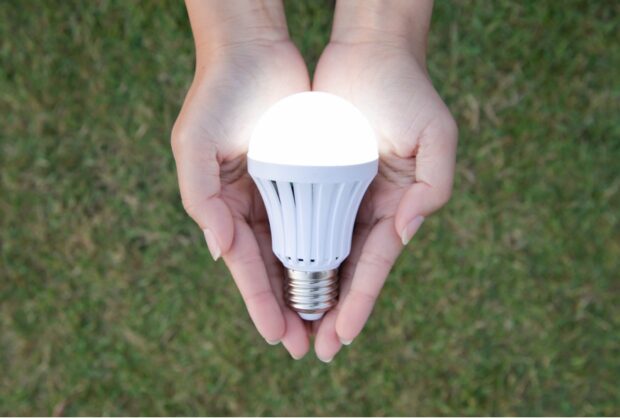Has your utility bill ballooned out of proportion? It’s time to cut back on that wasteful energy usage! Follow these electricity saving tips to save money.

Did you know that our planet only has about 150 years left of coal reserves? Burning coal is our primary means of harnessing electricity. It may not be a problem for us, but what about future generations?
The problem lies in many areas. While we need to be putting a heavier emphasis on clean and renewable energy, we can’t expect the whole world to convert their homes to solar, wind, or hydro energy overnight. In the meantime, however, there are ways to cut back on wasteful energy usage.
The question is, what can you do to reduce power consumption in your home, lower your energy bill, and be less impactful on the environment?
How to Reduce Wasteful Energy Usage Around the House
It may seem like your energy bill continues to rise each year. Some of it can be accounted for because of the cost of inflation. However, exorbitant energy bills are often the result of inefficient appliances, inefficient building materials, user error, and sometimes, all of the above.
If you’re looking for ways to save electricity in your home, keep reading for our top 10 smart energy tips.
1. Use LED Lights
Did you know LED light bulbs can last 25 times longer and save 75 percent more energy than traditional incandescent lighting? By using LED lights in your home, you’re reducing wasteful energy in two ways:
- LED light bulbs don’t need to be replaced as frequently, which means fewer bulbs going to landfills and less demand for new bulb production
- LED bulbs require a fraction of the energy other bulbs use
2. Turn Off and Unplug
Next, remember that just because an electronic device is off or in sleep mode, it doesn’t mean it has stopped pulling energy. These devices are often referred to as energy vampires because they continue to drain power when they’re not in use.
We recommend turning off all light switches and pulling the plug on things like microwaves, coffee pots, televisions, computers, gaming systems, and more when you’re not using them. It may help to invest in power strips with on/off switches to make things simpler.
3. Use Energy Star Certified Appliances
Next, you can save a substantial amount of electricity by opting for Energy Star certified appliances and electronics. Energy Star certifications can be found on everything from your fridge to your hairdryer. These products are designed to reduce wasteful energy consumption by limiting how much electricity they pull while in use.
For example, an Energy Star certified TV, on averages, uses 25 percent less electricity than their non-certified counterparts.
4. Start Incorporating Renewable Energy
It’s unrealistic to expect people to completely convert their homes to clean energy in a short period of time. While it can be done, it’s not exactly cost-effective. However, every little bit counts.
We suggest slowly incorporating renewable energy systems, such as solar power, into your home. Use this clean energy to power smaller devices (TVs, gaming systems, laptop chargers, phone chargers, etc.) As your renewable energy system grows, it can start taking on larger appliances and more household electronics.
5. Recycle, Reuse, and Repurpose
One thing most people don’t think about in terms of wasteful energy is the cost of production. Every new product you buy costs energy to produce, ship, and sell. You can significantly cut your impact by recycling, reusing, and repurposing whenever possible.
6. Don’t Be a Temperature Snob
There’s nothing wrong with enjoying luxuries around the home and being comfortable. However, this doesn’t mean your home needs to be 65 degrees in the summer and 75 degrees in the winter. Trying to maintain a more contrasting temperature in regards to the outside weather can plow through a lot of energy and spike your utility bill.
Find a happy middle ground and dress accordingly. For example, wear a sweater in the winter rather than pushing the thermostat to 75 degrees. Dress light in the summer rather than trying to super-cool your home.
You can also invest in a programmable thermostat that can allow your home’s temperature to fluctuate when you’re not home, sleeping in your warm bed, etc.
7. Decrease Hot Water Usage
When people think about shortening their showers, it’s because they’re trying to save water. However, by taking shorter showers, you’re also placing less of a demand on your water heater, which will result in less wasteful energy usage.
Following this line of thought, you can also save energy by using warm or cold water with your laundry cycles, dishwashing, handwashing, and more.
8. Replace Old Windows
Next, many older homes still possess the original windows they were built with. While this is charming and makes the home feel authentic, it’s also incredibly inefficient. Older windows don’t provide much insulation to block out the outside temperatures.
Whether you’re battling the freezing cold or blistering heat, you need to consider window replacement throughout your entire home. Additionally, double and triple-pane windows with air/gas spacing can reduce up to 95 percent of the sun’s harmful UV rays and significantly improve climate-control.
9. Utilize Natural Temperature Modifiers
Whenever possible, take advantage of free or low-energy temperature modifiers. For example, pay attention to the position of the sun on your home and how it affects the temperature. This can help you heat the home in the winter and keep your home cool in the summer.
Utilize shades, blinds, open windows, and fans to let nature moderate your home’s temperature.
10. Don’t Leave the Fridge, Freezer, or Oven Open
Finally, remember that it takes a substantial amount of energy to maintain extreme hot or cold temperatures, such as in your fridge, freezer, and oven. To reduce wasteful energy consumption, be sure not to linger at the fridge or freezer with the door open while deciding what to eat.
Additionally, checking the oven every three minutes to see if your pizza is done cooking only serves to release vital heat, slow the cooking process, and increase energy consumption.
Looking for More Home Improvement Ideas?
If you want to reduce wasteful energy consumption in your home, remember, it doesn’t have to be all or nothing. If everyone had an all-or-nothing mentality, significant change would never occur. The truth is, you can save electricity in your home without spending a dime, and for the big stuff (like solar energy) you can ease into it progressively.
And if you’re looking for any more advice or tips on home improvement, be sure to check out the rest of our articles before you go!



